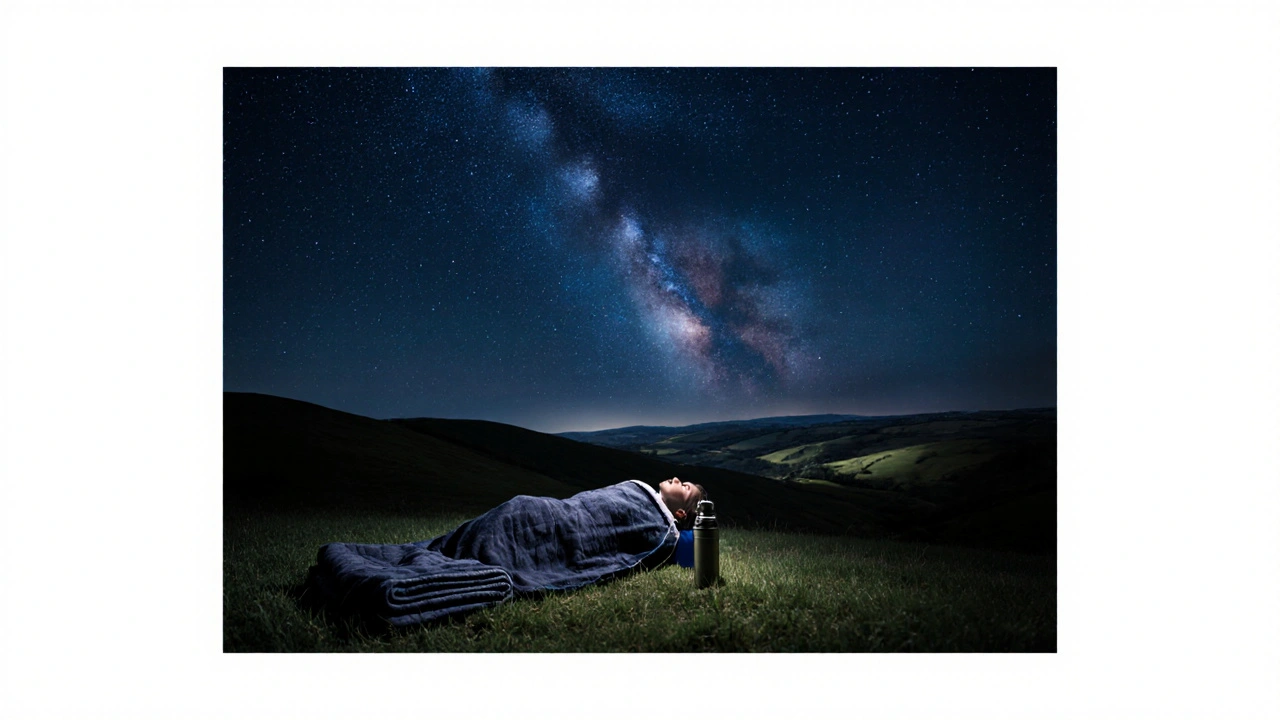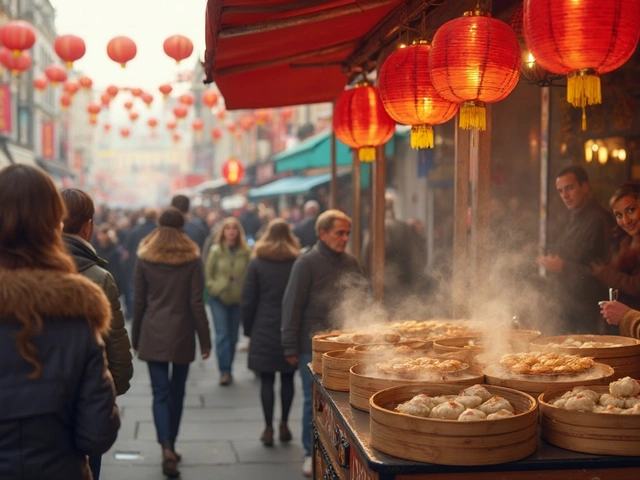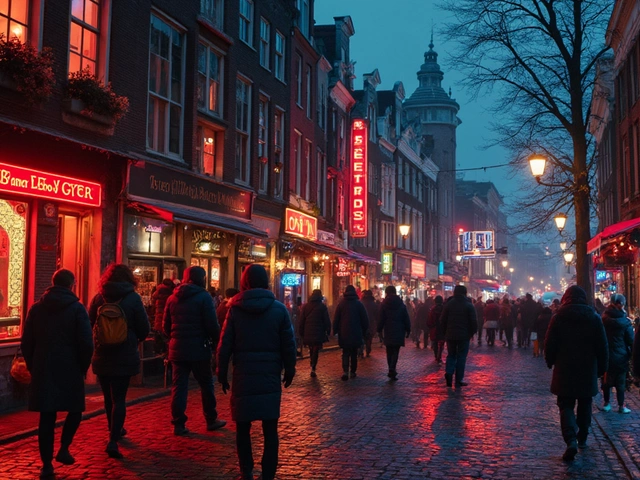
London’s skyline glows with a million artificial lights, but if you step just beyond the city’s edge, the night sky opens up in ways most residents never see. You don’t need to drive for hours to witness the Milky Way arching overhead-just find the right spot, wait for the right night, and let the stars come to you. In London, stargazing isn’t about escaping the city entirely. It’s about knowing where to look, when to go, and how to beat the light pollution that turns the heavens into a dim memory.
Why London’s Night Sky Feels So Far Away
London’s light pollution is real. A 2023 study by the UK Astronomy Trust found that over 85% of Greater London residents can’t see the Milky Way from their backyards. Even in parks like Richmond or Hampstead Heath, the glow from streetlights, office buildings, and the M25 keeps the sky washed out. But here’s the truth: you don’t need perfect darkness to see planets, bright constellations, or meteor showers. You just need to get away from the brightest clusters.
Start by checking the Dark Sky Finder map from the Royal Observatory Greenwich. It shows zones where light pollution drops below level 4 on the Bortle Scale-meaning you’ll see stars clearly, even with the naked eye. Most of these spots are within 30 miles of central London.
Top 5 Scenic Viewpoints for Stargazing Near London
1. Box Hill, Surrey
Just 30 minutes from London Bridge on the South Eastern train line, Box Hill is one of the most accessible dark sky zones in the South East. The summit offers a 360-degree view over the North Downs. On clear nights, you can spot Jupiter’s moons, Saturn’s rings, and even the Andromeda Galaxy with binoculars. Locals bring thermos flasks of tea and blankets from Waitrose or Co-op-it’s a quiet ritual, not a festival. No crowds. No noise. Just the wind and the stars.
2. Leith Hill Tower, Surrey
At 294 meters, this is the highest point in Southeast England. The tower, run by the National Trust, closes at dusk, but you can walk up the path from the nearby village of Dorking. Bring a red-light headlamp (not white-it ruins night vision). On clear autumn nights, the Pleiades cluster shines like a diamond dust necklace. The tower’s stone steps are cool under your hands as you wait for Orion to rise.
3. Chiltern Hills (Chinnor to Stokenchurch)
Head north on the Chiltern Line from Marylebone and you’re in countryside within 40 minutes. The rolling hills around Chinnor and Stokenchurch have minimal street lighting. Park near the Chiltern Way footpath and walk 10 minutes up a quiet ridge. This is where Londoners come to see the Perseid meteor shower in August. You’ll find others here-students from UCL, retirees with telescopes from the London Astronomical Society, couples on dates who want something quieter than a pub.
4. Richmond Park, London
Yes, it’s still in London. But Richmond Park, the largest of the Royal Parks, has pockets of relative darkness. Head to the Isabella Plantation car park after 10 PM. The trees block most of the city glow from the west. You won’t see the Milky Way, but you’ll spot Venus, Mars, and Jupiter clearly. It’s the only place in Greater London where you can see the International Space Station pass overhead without needing a special app. The deer don’t care if you’re staring up-they’re used to it.
5. The Wye Valley, near Tintern (1.5 hours from London)
If you’ve got a weekend, this is the big one. The Wye Valley is a designated Dark Sky Reserve. The River Wye reflects the stars like liquid glass. You can sit on the grass near Tintern Abbey ruins, wrapped in a John Lewis fleece, and watch shooting stars streak across the sky. It’s a pilgrimage spot for UK stargazers. The Wye Valley Astronomy Group holds monthly meetups-you don’t need to bring a telescope. Just your eyes.
When to Go: Timing Matters
Don’t pick a night just because it’s clear. You need a moonless window. The new moon is your best friend. Use the Time and Date app to check moonrise and moonset times. In November 2025, the new moon falls on the 21st-perfect for a weekend trip.
Also avoid nights after heavy traffic days. London’s air quality dips after rush hour, and haze from the M25 lingers. Check the London Air Quality Network website. If PM2.5 levels are above 25, hold off. The stars won’t cut through.

What to Bring (No Fluff)
- A red-light flashlight or headlamp (white light ruins your night vision)
- A thermos of tea or hot chocolate-London nights get chilly, even in autumn
- A blanket or reclining chair (lying down lets you scan the sky without neck strain)
- The Star Walk 2 or SkySafari app (use it to identify constellations, but turn brightness to minimum)
- Warm layers-London’s humidity makes the cold feel sharper than it is
- A notebook or voice memo to jot down what you see. You’ll forget by morning.
Local Tips from London Stargazers
Don’t go alone on your first try. Join a London Astronomy Society event. They host free public viewings at the Royal Observatory Greenwich on the first Friday of every month. Bring a friend, a thermos, and your curiosity.
Some locals swear by the view from the top of the London Eye after closing time-but you can’t get up there unless you’re staff. Skip it. The real magic happens where no one’s paying to be.
If you’re in East London, try the Hackney Marshes on a Tuesday night. The lights from Stratford and the Olympic Park are far enough to the north that the southern sky stays dark. You’ll see the Big Dipper clearly.

What You’ll See (Without a Telescope)
In November, the sky turns into a classic winter display:
- Orion-the hunter’s belt is unmistakable. Three bright stars in a row. Below it, the Orion Nebula glows like a fuzzy star.
- Taurus-the bull’s eye is the Pleiades cluster, a tiny dipper of blue stars.
- Castor and Pollux-the twin stars of Gemini, shining bright above the horizon after 9 PM.
- Jupiter-brighter than any streetlight, low in the southeast after sunset.
- Mars-a reddish dot, visible near the horizon until midnight.
And if you’re lucky? A meteor. One streak across the sky. You’ll remember it for years.
Why This Matters
Stargazing isn’t just about seeing stars. It’s about remembering you’re part of something bigger than rush hour, Tube delays, and Zoom calls. In a city that never sleeps, finding quiet under the night sky is a quiet act of rebellion. It’s not tourism. It’s belonging.
Londoners spend so much time looking down-at phones, at pavement, at screens-that we forget the sky is still there. Waiting. Quiet. Full of wonder.
Can you see the Milky Way from London?
Not from central London. But you can see it from Box Hill, Leith Hill, or the Wye Valley on moonless nights. The Milky Way appears as a faint, hazy band across the sky-like spilled milk. It’s fainter than photos show, but unmistakable once you’ve seen it.
What’s the best time of year for stargazing near London?
Autumn and winter are best. From September to March, the nights are longest and the air is clearest. Summer has shorter nights and more haze. November and February are ideal-cold, dry, and the skies are often sharp.
Do I need a telescope to enjoy stargazing in London?
No. You can see Jupiter, Saturn, the Moon, Orion, and the Pleiades with just your eyes. Binoculars help-especially for spotting the Andromeda Galaxy. Telescopes are for deeper viewing, but they’re not necessary for a powerful experience.
Are there any guided stargazing events in London?
Yes. The Royal Observatory Greenwich runs free public nights on the first Friday of each month. The London Astronomical Society hosts monthly meetups at Box Hill and Leith Hill. Check their websites-most events are free and open to all.
Is it safe to stargaze alone in London’s outskirts?
Generally yes. Richmond Park, Box Hill, and Chiltern Hills are well-used, well-lit paths with foot traffic. Avoid isolated areas after midnight. Stick to National Trust sites or public parks. Tell someone where you’re going. Bring a phone and a flashlight. Most locals do it regularly without issue.
Next Steps: Your First Night Under the Stars
Start simple. Pick one spot-Richmond Park or Box Hill. Check the weather. Wait for a new moon. Bring a blanket, a thermos, and your phone with the SkySafari app. Show up 20 minutes before sunset. Let your eyes adjust. Don’t rush. Look up. And when you see your first star, you’ll realize: you didn’t need to leave London to find the universe. You just needed to look up.





